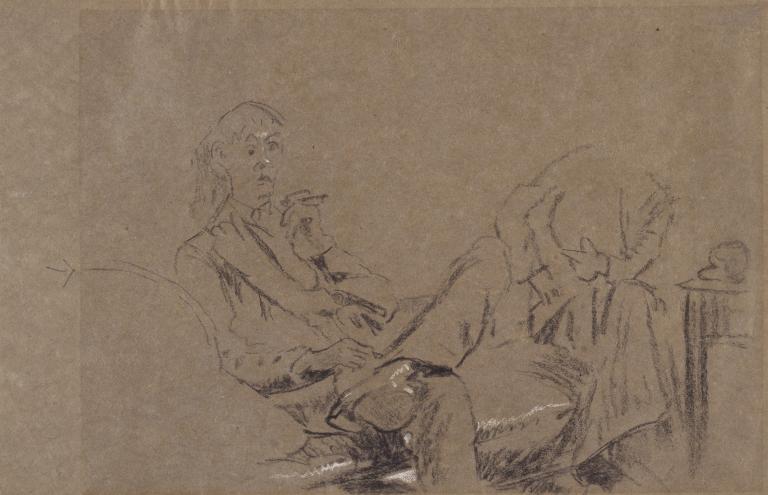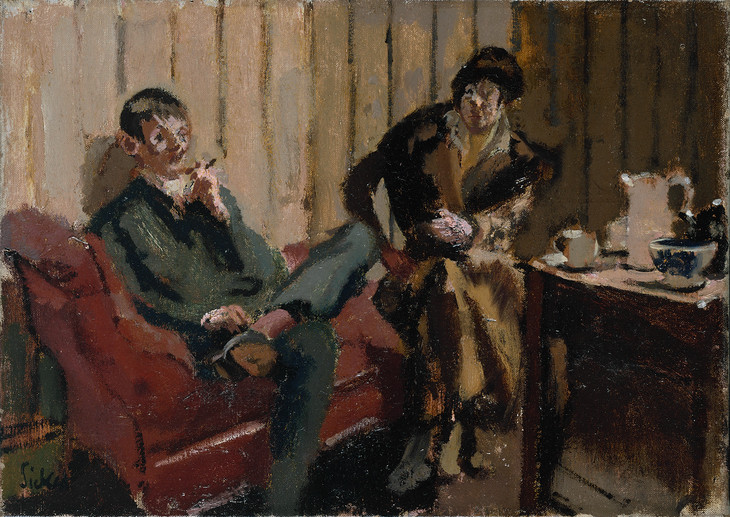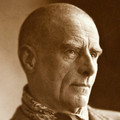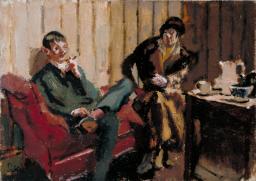This sketch, in black and white chalk on coarse grey-brown paper, is a preliminary study for the oil painting, The Little Tea Party: Nina Hamnett and Roald Kristian (Tate N05288). Kristian’s figure is rendered in the greatest detail, from his slackened posture to the shadowy folds of his clothing. His hastily rendered face is almost caricature, whereas Hamnett’s figure is headless. A table of tea things on the right is nominally outlined and the background is left entirely blank. Sickert often advised students: ‘Drawing is from the particular to the general; painting is from the general to the particular.’
Ownership history
Exhibition history
References
Technique and condition
Entry
How to cite
Nicola Moorby, ‘Study for ‘The Little Tea Party’ 1915–16 by Walter Richard Sickert’, catalogue entry, January 2005, in Helena Bonett, Ysanne Holt, Jennifer Mundy (eds.), The Camden Town Group in Context, Tate Research Publication, May 2012, https://www




